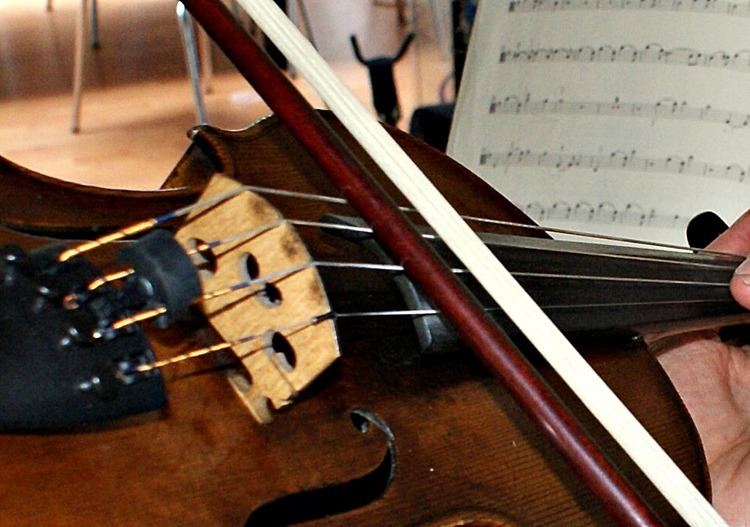 | ||
In music for bowed string instruments, col legno, or more precisely col legno battuto ([kɔl ˈleɲɲo batˈtuːto], Italian for "hit with the wood"), is an instruction to strike the string with the stick of the bow, rather than by drawing the hair of the bow across the strings.
Contents
How to col legno with james ehnes
History
The earliest known use of col legno in Western music is to be found in a piece entitled "Harke, harke," from the First Part of Ayres (1605) by Tobias Hume, where he instructs the gambist to "drum this with the backe of your bow".
Sound
The percussive sound of col legno battuto has a clear pitch element determined by the distance of the bow from the bridge at the point of contact. As a group of players will never strike the string in exactly the same place, the sound of a section of violins playing col legno battuto is dramatically different from the sound of a single violin doing so.
The wood of the bow can also be drawn across the string — a technique called col legno tratto ("drawn with the wood"). This is much less common, and the plain marking col legno is invariably interpreted to mean battuto rather than tratto. The sound produced by col legno tratto is very quiet, with an overlay of white noise, but the pitch of the stopped note can be clearly heard. If the sound is too quiet, the bow can be slightly rolled so that a few bow hairs touch the string as well, leading to a slightly less "airy" sound.
Equipment
Some string players object to col legno playing as it can damage the bow; many players have a cheaper bow which they use for col legno passages, or for pieces which require extended passages of col legno. Some players tap the strings with pencils instead of bows, producing a further percussive, lighter sound.
Examples
Some notable examples are:
